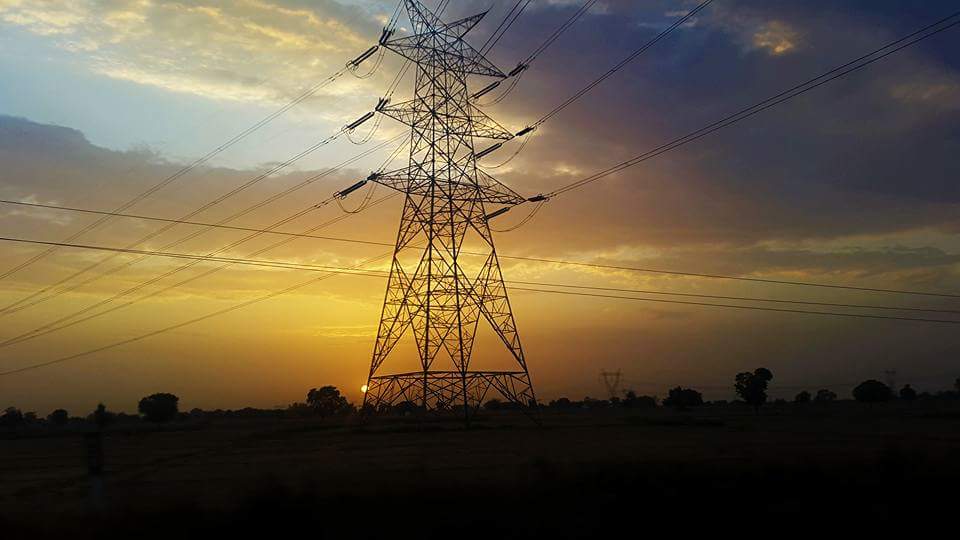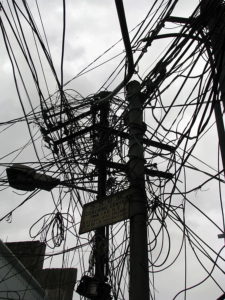by Ishaan Goel
Energy is crucial to India’s policy agenda. Millions of households are yet to gain reliable access to electricity, hampering their potential for economic growth. Severe pollution issues create widespread health problems. Renewables are prioritized as viable solutions across the political spectrum, with their low costs and ease of installation in remote regions. The current administration has ambitious plans for renewable energy (RE), targeting an almost 4x increase in installed capacity to 450 GW by 2030 and introducing a spate of tax and investment reforms.
At the heart of the Indian power supply chain lie distribution companies (discoms). The discoms purchase power from power generators, and sell it directly to consumers or businesses. Most discoms are public enterprises owned by the central or individual state governments. They are concentrated in specific regions where they hold monopoly over power supply.
Discoms have an important role to play in the integration of RE into the grid. However, they are currently ridden with financial and administrative problems. Due to several issues, a large number of them are running large losses and are in severe debt. They are unable to pay power producers, with outstanding payments summing to over $19 billion in November 2020, and numerous government bailouts have failed to alleviate the situation. These problems pose tough barriers against the adoption of RE in India.

SOURCE OF FINANCIAL PROBLEMS
To make power affordable for the masses, governments regularly provide large waivers in electricity tariffs and unpaid electricity bills owed to discoms. This is usually done for certain demographic groups as part of electoral promises, particularly farmers and low-income households. Governments also seek to promote redistributive welfare through the subsidization of agricultural and rural power using higher revenues from industrial and commercial applications.
All of these provisions are supported by payment guarantees to discoms from state governments, to cover any deficits in revenue. However, governments frequently default from these obligations due to their own financial issues, forcing discoms to operate under loss. Tariffs undergo periodic regulation to ensure that they reflect current costs, but subsidies and other concessions cannot be easily reversed for political and economical reasons.
To make matters worse, a large proportion of discoms are also locked in long-term power purchase agreements with thermal power plants (mostly coal and natural gas). The conditions of these agreements were originally designed to attract private investment into thermal power generation. They usually stipulate that discoms must pay the plant a fixed fee based on its maximum potential output, and a smaller fee for the power actually purchased.
As a result, discoms tend to have high fixed costs because they pay the same amount to producers regardless of how consumption patterns vary. Base tariff rates are generally set low in India for the benefit of low-income households, and change frequently compared to the terms of the agreements. So, discoms must recover their high, fixed costs from variable and uncertain revenue streams.

Technical losses can also contribute significantly to discom problems. Power theft is a big issue in India, with illicit connections to transmission lines drawing out almost a third of power in some regions. Poor maintenance and tampering of electricity meters and lines, especially in rural areas and small towns, leads to wastage of supplied power too. This reduces the already insufficient revenues of the discoms.
EFFECTS ON RE PROVIDERS
When governments default on payments to discoms, the discoms themselves are unable to pay the electricity providers. This creates a chain of debt across the entire power supply chain, which has particularly pronounced effects for RE providers.
Tariffs for RE are usually fixed before or during the development of the project, as an assurance to providers to promote investment in the sector. However, such agreements do not provide the same level of protection as the long-term agreements made with thermal power plants. Providers end up operating on thinner margins that are heavily reliant on projected revenues from discoms.
When discoms do not receive their dues, they cannot pay RE providers whose finances are also placed in precarious conditions. Providers are usually given future payment guarantees, but these cannot help sustain them in the short-term. They also find it more difficult to raise funds from other financial institutions due to their increased risk profile. With such uncertainties and barriers to acquiring capital, firms are dis-incentivized or unable to enter the RE sector.
Discom issues also affect the adoption of captive RE – private generation facilities managed by industrial consumers for their own uses. To avoid wastage of excess power produced during peak times, providers usually ‘bank’ it with discoms. This power can be ‘withdrawn’ during off-peak hours to balance out supply. Discoms usually charge sizable fees for banking to add to their revenues, and also require fees for transporting power from production facilities to industries. All of this raises the cost of RE so that any cost benefits over thermal power are negated, which can discourage switching to RE.
Many governments have established renewable purchase obligations (RPOs) for discoms in their respective states, to promote the integration of RE in the grid. However, adhering to RPOs is cost-inefficient for discoms as they are already paying for capacity from thermal power plants. Discoms also need to spend on upgrading their grid capacity to accept the variable power output of RE. To avoid these issues, many discoms end up curtailing (refusing to accept or pay for) large amounts of electricity from RE generators. This leaves providers with lower revenues than they had planned for when constructing their facilities. This adds yet one more risk to the RE sector.
SOLUTIONS
Discom issues are major deterrents to the adoption of RE. These could be solved by improving the health of discoms, or by developing alternative methods of delivering renewable power.
Of the latter, microgrids are promising and have been implemented with some success in remote regions in India. They attract political goodwill because of their ability to boost electrification of households and commerce in underdeveloped regions. Discoms usually face the greatest difficulties in power supply and tariff collection in such regions, so their burden is eased too.
Private interest in microgrid development is rising. For instance, Tata Power (NSE: TATAPOWER) has partnered with the Rockefeller Foundation to implement 10000 microgrids in India of capacity >2MW by 2026. To promote microgrids, it is important that the government provide greater transparency about grid expansion plans and adequate sources of financing for developers. Awareness also needs to be created amongst target communities to make them more receptive towards the system.

Other alternatives include the promotion of household and community RE projects, particularly in solar energy, which is already underway through numerous government schemes. Captive RE is also gaining ground with several states slashing banking and transmission charges for industrial applications. These measures alone cannot solve discom-related issues, however, as they are mostly applicable in non-urban regions. Larger scale RE projects must be added to the grid and structural issues in discoms must be addressed head-on to boost RE integration in cities and urban industries.
Governments have introduced several relief packages for discoms in the past, but these have not proven very effective due to the underlying structural issues described above. In its most recent budget, the central government allocated almost $42 billion for reforming electricity distribution over the next 5 years. This will be done through breaking the monopolies of discoms in geographic regions to increase efficiency, and funding rural electrification. The benefits of this cash injections are likely to be transmitted to RE providers.
Smart meters are being pushed forward to reduce transmission and collection-related losses in revenue, with the government hoping to install 250 million. Such meters will allow for better maintenance and monitoring of transmission lines to detect possible power theft. They will also digitize the payment of tariffs to reduce defaults.
The government is also experimenting with transitioning to real-time markets, where discoms purchase power on energy exchanges just before supplying it, to ensure supply matches demand. This arrangement reduces average input costs for the discoms, and makes the grid more flexible for the integration of RE.
CONCLUSION
To achieve its targets and foster growth in the RE sector, the government needs to ensure that providers receive guaranteed, regular revenues and operate under low risk to invest and expand further. Despite emerging alternatives to RE provision, creating such an environment is only possible if discoms are streamlined and debt-free. Structural and market-based changes will aid in the recovery process, but it is equally important for state governments to honor payment obligations and minimize defaults across the supply chain.
*****
Ishaan Goel is a high school senior from Mumbai, India and an incoming freshman at the University of Chicago. He likes applied mathematics and statistics, especially in relation to economics and finance. He is very interested in green energy and sustainable technologies, because of their potential and increasing relevance for the future. Ishaan’s hobbies include writing, long-distance running, playing the keyboard and coding.








